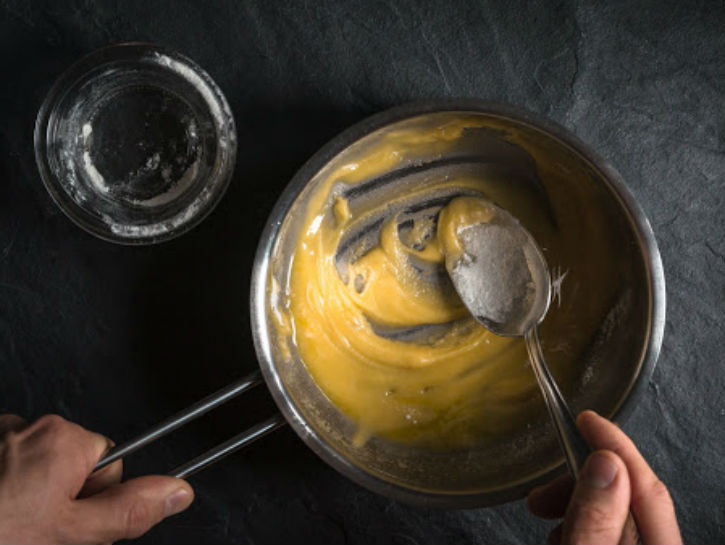If you enjoy a thick, creamy soup, but constantly find yourself making soups that end up unsatisfyingly thin and watery, there are actually things you can do to get the texture you want. Soup is deceiving because it is not as easy to make as you would think. You can quickly change the texture by adding different veggies and starches.
So, the next time your soup is looking thin, try some of these tips and tricks to make it thicker, creamier, and delicious.
Dairy

One of the more obvious solutions, adding milk, half and half, or cream to your soup can give a silkier mouthfeel and make it rich in flavor. Start by adding a few tablespoons until you reach the texture you want. If you use milk, the higher percent, the creamier the result.
Dairy is a classic soup thickener that is easy to use, and most of us have some handy in the fridge. Just be sure to wait until the end of cooking to add it, then let your soup simmer for about ten minutes so it can thicken with the cream. Leaving it in too long in boiling soup can cause it to curdle.
Another option is to add yogurt. It works a lot like cream but does have a lighter result. The difference between cream and yogurt is that yogurt will dramatically change your soup’s flavor. Yogurt gives a tangy flavor and works best with crisp, light spring soups like Avocado or Chickpea.
You also want to wait until the end to add the yogurt to the soup before letting it simmer. And, both whole milk or fat-free yogurt will work well, but the whole milk version will make your soup thicker.
Flour Or Cornstarch

Starches are a carbohydrate that are insoluble in water, which means they won’t dissolve, and will instead clump up and sink to the bottom. So, instead of putting a tablespoon or two of flour or cornstarch directly into your soup, first whisk it with some water or broth in a separate bowl before adding it.
When that mixture hits the hot soup, the granules will release grains into the liquid and absorb it, causing your soup to thicken and resulting in a creamy consistency.
You can also start your soup my making a roux, which is equal parts butter and flour. After combining, and cooking just enough to lose the taste of the flour, slowing pour in your liquid and it will thicken as it comes to a boil.
Bread, Corn Tortillas, Or Breadcrumbs

Take out chunks of sourdough or French bread and toss them into your soup until they dissolve. Since bread is a starch like flour, it will absorb liquid and thicken your soup. Corn tortillas can also work as a thickening agent, or a small amount of breadcrumbs.
You can also add extra flavor by using bread with aromatics like thyme or rosemary. However, plain white bread will work just fine.
Another trick is to soak the bread chunks in some of the soup broth and then pureeing it before putting it in the soup. However, placing them directly into it will work, you will just have to wait for the bread to dissolve.
Oats

Best with potato soup, garlic, or tomato soup, adding whole or quick oats thickens mostly like bread does, with the starch absorbing the liquid. Just remember to go slowly. Add a small amount to start and let them dissolve while stirring constantly. Also, let it simmer for a bit, so you know just how thick your soup is. It’s better to add a little bit at a time instead of overdoing it all at once.
Side note — If you are trying to thicken your potato soup and don’t have any oats, you can also use instant potato flakes. Just check the box for the ratio of water to flakes and use some of the broth to mix with the flakes. Then add it back for a nice, hearty potato soup.
Whole, Beaten Eggs

If you would like a savory solution to thicken your soup, beat an egg or two in a bowl, and then whisk them thoroughly. Pour a bit of broth into the eggs and continue to whisk vigorously. Once everything is mixed together, put the egg and soup mixture back into the hot soup.
You can use just the whites for a lighter soup, and if you want to go richer, use only the yolks.
Puree

If you have a blender in your kitchen, a simple way to thicken your soup is to puree a small amount of the ingredients. This can work for any kind of soup, and pureeing veggies, beans, potatoes, or even rice will make a great thickener.
No matter what the ingredients, pureeing a small part of your soup and then adding it back to the pot will add some body without changing the flavor. Start small with half-cup portions, and then depending on how thick you want to go, keep adjusting.
This technique is often used in commercial kitchens, and it will make the most out of your soup without having to add anything extra.
With these simple tricks, you can be sure that the next soup you make won’t be watered-down. Instead, you can get your soup to the exact texture you want, no matter what extra ingredients you have available in your kitchen.
